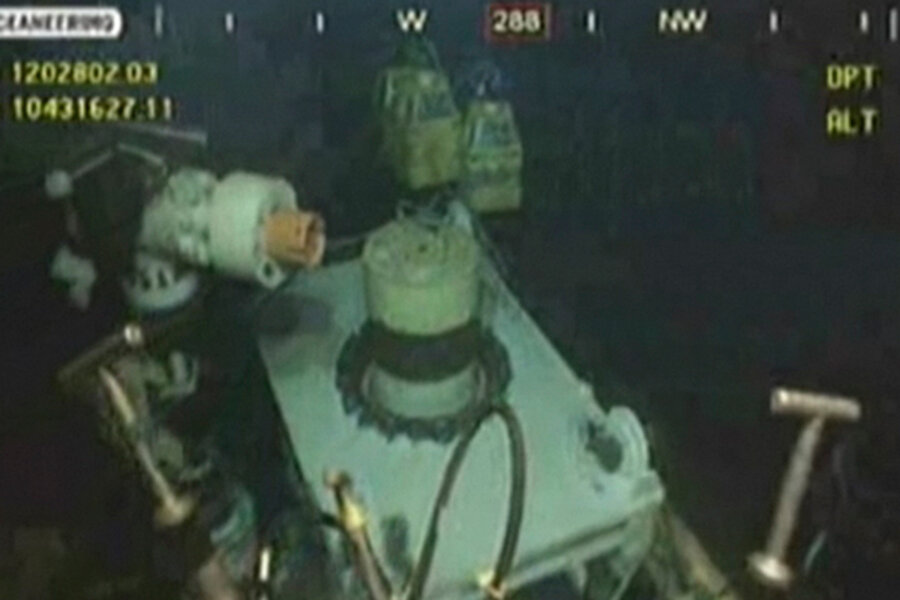BP halts Gulf oil spill leak for first time as crucial test begins
Loading...
For the first time since the Gulf oil spill started nearly three months ago, oil is no longer gushing into the Gulf of Mexico.
BP fixed a faulty valve on its new containment cap Thursday morning, then began its test to see if the new cap can shut in leaking oil indefinitely without harm to itself or the well bore beneath it. No oil is leaking during the test, and if the test is successful, it is possible that no oil will leak from the well ever again.
“Obviously this is an encouraging time,” Kent Wells, a senior vice president of BP, told reporters Thursday.
IN PICTURES: The Gulf oil spill's impact on nature
Officials caution that the stoppage may be only temporary. Testing of the new cap will take place over 48 hours. In that time, a team of scientists and engineers will use pressure readings and sonar to examine the condition of the well bore, which extends 13,000 feet down from the wellhead – which itself is 5,000 feet below the surface of the Gulf – to the reservoir of oil.
Engineers worry that if the well bore is damaged, oil could blow out the side of the well bore and form a new gusher elsewhere on the sea floor.
If pressure readings remain high, that will indicate that the well bore has retained its integrity – that oil is staying inside the well bore and pushing up against the cap. Low pressure readings would suggest that oil is escaping through cracks in the well bore, forcing BP to open the cap again and revert to collecting oil in surface ships.
Mr. Wells said he did not “want to create a false sense of excitement” at this time, adding: “We need to let the test move forward and learn from it and make the right decisions.”
Integrity tests at this depth are unprecedented, which has contributed to why officials have delayed the test twice in two days. “It could be done quicker but we’re going to be very methodical,” said retired Coast Guard Adm. Thad Allen, who is leading the oil spill relief effort, Thursday morning.
Allen said that in addition to the environmental benefits of not having oil flow into the ocean, keeping the cap shut makes operations less vulnerable in case of a hurricane. Surface ships collecting oil would need to leave the site in a hurricane.
He made clear that the current test should be viewed only as a “precursor” to the relief wells that are designed to ultimately kill the flow of oil at the source. “I don’t want to reverse priorities here: stop and contain the flow of oil. It’s a two-fer if we can do it,” he said.
The drilling of the two relief wells has been temporarily suspended while the integrity tests proceed. The first relief well, at 17,840 feet, is 100 feet from its target. The second relief well – a backup – is at 15,874 feet. BP will use the relief well to pump drilling mud into the leaking well, forcing the oil back into the reservoir. Then BP will pump in cement, sealing the well forever.
BP started drilling both wells in May.
IN PICTURES: The Gulf oil spill's impact on nature
Related:





